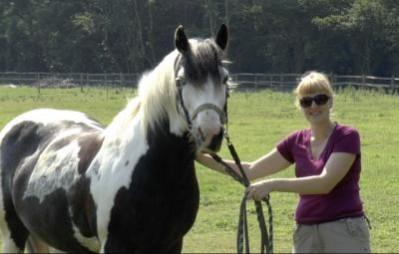
It is a well known fact that primates, like humans chimpanzees and gorillas are very responsive to facial gestures, as social cues.
However, it has not been clear till now, how animals who have an eye on each side of their head communicate. Scientists from the UK have now found that horses can send social signals with their ears.
People who have worked with animals such as horses and dogs would say that this is no big surprise, as horses have always been known to send emotional and sentimental signals to their human masters. However, this is the first ever scientific proof that social signals exist amongst horses.
"Our study is the first to examine a potential cue to attention that humans do not have: the ears," said Jennifer Wathan, author of the study, and Researcher at the University of Sussex, in a press release.
"Previous work investigating the communication of attention in animals has focused on cues that humans use: body orientation, head orientation, and eye gaze; no one else has gone beyond that. However, we found that in horses, their ear position was also a crucial visual signal that other horses respond to. In fact, horses need to see the detailed facial features of both eyes and ears before they use another horse's head direction to guide them."
The previously accepted notion about animals with eyes on both sides of the head was that they cannot gather social information from the direction of the gaze of another animal from their specie. However, this new study, named "The eyes and ears are visual indicators of attention in domestic horses", and published in Current Biology, challenges such notions.
Wathan and Karen McComb, who lead the study, took photographs of horses with differently positioned head, eye and ear. Then, for the experiment, they placed two buckets of horse-feed, with a life-size picture of a horse's head placed in the middle. This head was facing either of the two buckets. Then, they released 24 horses, on-by-one towards the buckets.
They found that the direction of the head in the picture, the position of the ears and that of the eyes, all influenced the real horse's decision on which bucket to eat from. They also had a few pictures where the ears or the eyes or both were covered with masks. This also influenced the horse's decision, thus proving that the eyes and ears are indicators of social signals for the horses. To see a video on how the experiment was done, click here.

















